Pre-production Ki-44, 47th Independent Flight Company
This is another kit from a while ago. I built it in 2014.
The subject this model represents is Ki-44 No. 4405, which was the 5th pre-production (prototype) aircraft, flown by Maj Toshio Sakagawa, commander of the 47th Dokuritsu Hiko Chutai (47th Independent Flight Company), Saigon, French Indochina, December 1941. Sakagawa served in China prior to Japan's entry to World War II without any opportunities to engage the enemy, although he later led the 25th Sentai in China and achieved 15 victories prior to his death on 19th December 1944. In August 1941 he was assigned the leadership of the JAAF's experimental unit, the 47th Dokuritsu Hiko Chutai, which had been set up to test the Ki-44 in combat. It was equipped with nine pre-production aircraft, Nos. 4402 to 4410.
The nine aircraft were divided into three flights. The lead aircraft of each flight had a single, slanting tail stripe, white for the first formation, yellow for the second formation and red for the third. The second aircraft in each flight had two stripes and the third aircraft had three stripes in the same flight colours. Each of the aircraft featured a unit insignia, under the cockpit on the port side, of a Yamaga-ryu drum design recalling the legend of the 47 Ronin.
There were a number of design changes evident from the first prototype to the 7th pre-production aircraft (No. 4410).
The 1st prototype, 4401 had a number of differences from the production aircraft;
pointed spinner
single piece undercarriage leg covers
louvers behind the cowl flaps
the aerial mast mounted on the rear canopy section
the centre canopy slid back and under the rear canopy
Ki-44 No. 4402, the second prototype didn't have the louvres of the first prototype, but retained the same canopy, spinner and undercarriage leg covers. References show it with a single, centreline mounted drop-tank, with a small number 2 on it. Production aircraft would have two drop-tanks mounted inside and aft of the main undercarriage.
The next aircraft for which I have found photographic evidence is No.4405. This aircraft has the production canopy, with the centre canopy sliding over the rear canopy section which in turn required the relocation of the aerial mast to forward of the cockpit. The aircraft retains the pointed spinner, single piece main gear covers and single, central drop-tank.
Photos of Ki-44 No. 4406 show it to have had a single drop-tank as well, however No. 4408 had the twin drop-tanks of the production aircraft. Photos show No. 4409 and No. 4410 to be identical to No. 4408.
This kit is a special edition which provides the standard sprues for the Ki-44 along with the additional plastic parts needed to convert it to a pre-production aircraft. This includes a new, more pointed spinner, single piece wheel covers with the lower section folding out at 90º when down and inserts for the central section of the wheel wells (accounting for the single piece wheel covers, rather than the separate inner doors of the production aircraft). It includes three decal options, 1st formation leader and company commander, Maj Toshio Sakagawa (No. 4405), 2nd formation leader Capt. Susumu Jinbo (No. 4406) and 3rd formation leader Capt. Yasuhiko Kuroe (No. 4408).
So, the kit allows the modeller to build any of the aircraft from No. 4405 onward, although with a bit of modification if you want to add the single drop-tank to 4405 and 4406. I'm not sure about 4403 (prototype 3) and 4404, although you would assume the latter had the production canopy like 4405. It would be up to the modeller to decide if 4407 had one or two drop-tanks.
I chose to build No. 4405, in part because I had two good photos of it, and because the single drop-tank would make it stand out from other Ki-44s.
Construction was straight forward except for the modifications required to fit the new parts, as shown in the instructions, and my own modifications to add the single drop-tank.
The trickiest bit was removal of a section of each wheel well to fit one rectangular insert each side. My inserts were a little warped so I straightened them out as best I could without losing the detail. A third small part was placed between the wheel wells to cover the recesses for the inner gear doors on the production aircraft.
The instructions would also have you enlarge the recess for the exhausts, but looking at photos of the aircraft, I think this is just a trick of the light and exhaust staining, so I didn't bother.
The kit instructions ignore the drop-tanks. As noted above, the third option, No. 4408, could use the kit drop-tanks as provided, but the other two require modifications to mount a single centreline drop-tank.
I filled in the drop-tank attachment points under the wings and worked out where the centreline tank would go. References show the drop-tank to be located behind the undercarriage bay and I assumed the tank would be as far aft as the wing tank locations. The fuel connection lines are offset to port to avoid the fuselage keel structure. The kit drop-tanks are handed to allow for the wing dihedral, so I removed the sway braces and fuel connection lines and replaced them with sections of dressmaker pins.
The cowling is cast as a single piece, which is quite nice except there is a slight step around the forward curve of the nose where the mould sections obviously join. This was the same on a second kit I built. For this build, it was simple enough to sand the cowling smooth.
One thing to watch with the Ki-44 is that the butterfly flaps extend slightly aft of the upper wing when retracted, as they are moulded on the kit. Don't make the mistake of trimming these back.
Like many contemporary aircraft, the Ki-44 had a small, retractable boarding step on the lower port side, but Hasegawa moulds this closed. I decided to carve out a slot where the retracted step outline was and scratch build a step with dressmaker pins and scrap plastic.
The only other additions were Eduard pre-painted lap belts and drilling out the wing gun barrels.
The interior was painted Nakajima Interior Green as per the instructions and the wheel wells Metallic Blue-Green.
The pre-production Ki-44 were initially painted overall grey and had Hinomaru on upper and lower wing surfaces but not on the fuselage, as was the official requirement prior to 1942. When they moved to Saigon on 9th December 1941, the Ki-44s were painted brown to match the local terrain. Photos show this to be rather rough and patchy.
As usual, I pre-shaded the kit before applying an overall IJA Grey.
The kit decals have a pinstripe border to the fuselage stripe, but I think that is just the effect of the stripe being masked-off when the new camouflage was applied. Therefore, I painted the fuselage and tail stripes and masked them off. Next, I replicated the patchy look of the upper surface camouflage by applying a dense mottle of brown, having first masked for the upper wing rondels to give a pale halo effect.
After a gloss coat and the few decals were applied, I sprayed a dirty grey for exhaust staining. I was rather happy with the top surface colouring so decided that this was a freshly repainted aircraft on 9th December 1941, ready for the Japanese drive south through the Malay peninsula and the Dutch East Indies, so I didn't weather it further.
As the drop-tank on No. 4402 had a small 2 on its nose I decided to add a small 5 to my kit's drop-tank using the small number indicating the fifth decal on the decal sheet.
The last thing to do was to unmask and position the canopy and add an antenna wire and lead-in.
Apart from the warped wheel well parts, which I couldn't quite flatten out, this kit went together very nicely and builds into a very good looking aircraft.
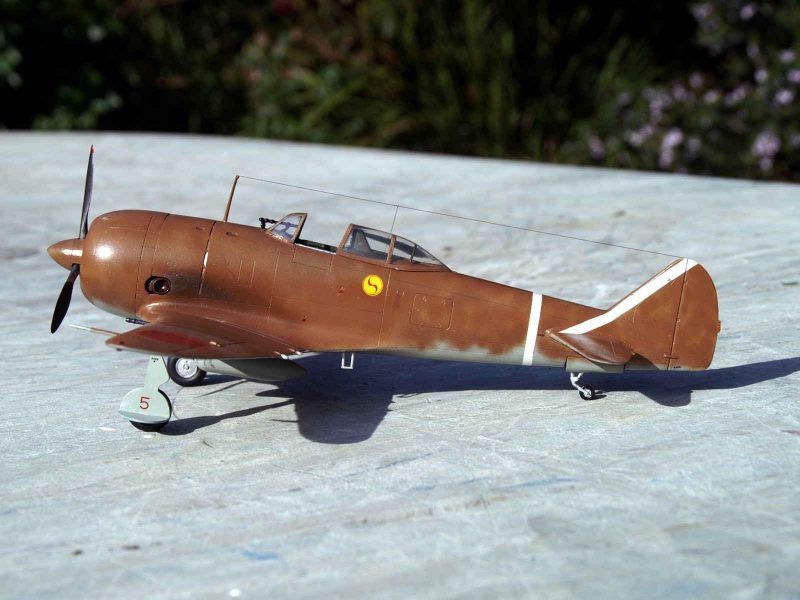
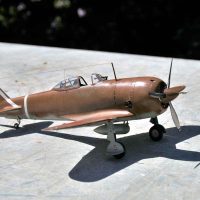
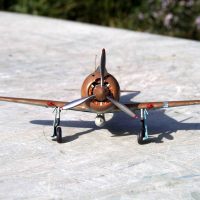
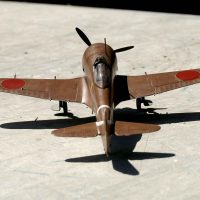

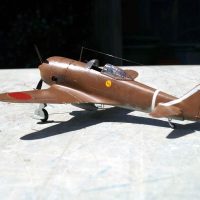
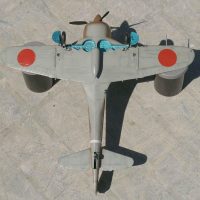
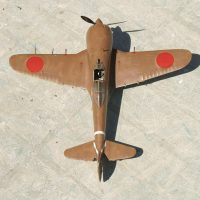
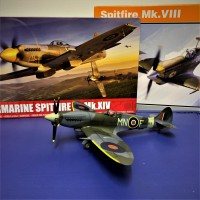


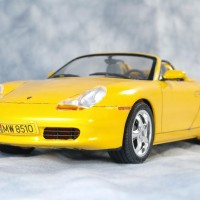
Very tidy build. Don't think I have seen a brown Tojo before. Thanks for posting the history as well.
Thanks for looking
Thanks for filling some gaps in my Japanese WW2 fighters knowledge. The fact that the Tojo was in service, albeit experimental, as early as late 1941 is new to me. The peculiarities of these pre-production aircrafts is also well reflected on your model. A thoroughly enjoyable reading and an unusual Ki-44 model expertly built
Nicely done - that's a catching scheme! Man that thing had a burly front end - from the back and top, it resembles an ice cream cone with wings!
This is a magnificent build... It looks wonderful and I really like what you have done here. I found this photo online a while ago and thought about building my 1/32 scale Hasegawa Ki-44 into an early built machine like what you have done.
Instead I ended up covering it with foil and using the kit supplied markings for the 246th Sentai with Home defense bands.
This is one of my favorite Japanese types. I pressed the "liked" button too. Well done !
Thanks, Louis.
That photo is one that I referenced for the build. It gives a good view of the camouflage application.
The nearest aircraft is No. 4402. You can see that the rear part of the canopy is fixed, while the centre part is retracted aft and under the rear section.
The second aircraft is No. 4406 flown by Capt. Susumu, the 2nd formation leader.
I don't know which number the third aircraft is, but the fourth is a Ki-27.
And here is a 1/72 version of No. 4408 that I built 40 years or so ago.
It has been stored in a shoe box in my shed for the last 25 years and is a little worse for wear. I wiped most of the dust off for the photo.
I obviously didn't know about the different spinner back then.
3 attached images. Click to enlarge.
This is such a nice model, Michael @michaelt!
I liked your historical presentation, filling an important gap at the Ki-44 chronicles.
Thanks, mate.
Your Tojo looks fantastic Michael. You have done a really nice paint job and build. I like it very much! Your article is really good reading too.
Thanks, mate.
Thanks Pedro.
The 9th of December was the day after the Pearl Harbour attack (which was 8th of December on this side of the date line), so the Ki-44 was in active service from the very beginning of the Pacific war.
The Ki-43 and Ki-44 were developed in parallel as complimentary 'light' and 'heavy' fighters and there is a fair bit of evidence that the butterfly flaps were developed for the Ki-44 and then applied to the Ki-43 from the 11th pre-production aircraft.
Thanks, Greg.
That's what you get for trying to put a big engine in the smallest airframe possible.
I think it is a good looking aircraft, though.
Thanks for sharing the history/background of this beautiful plane.
Your build is very nice.
This scheme suites the plane very well.
Thanks John.